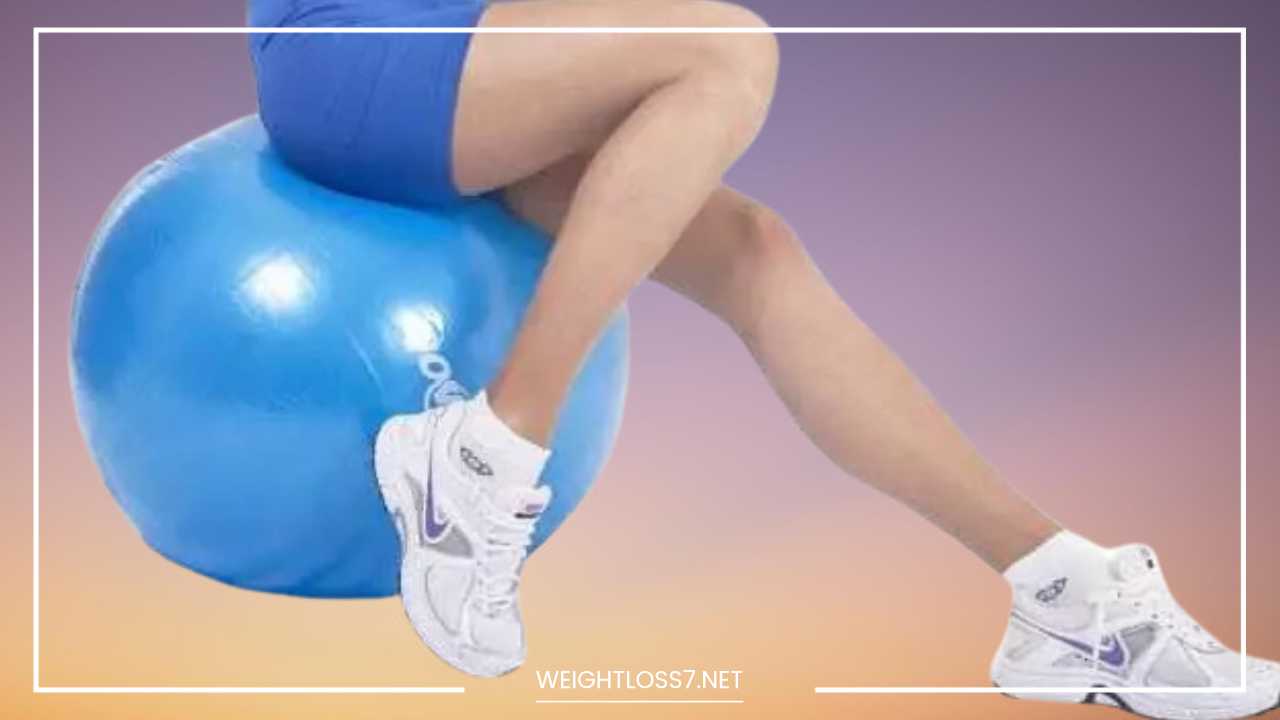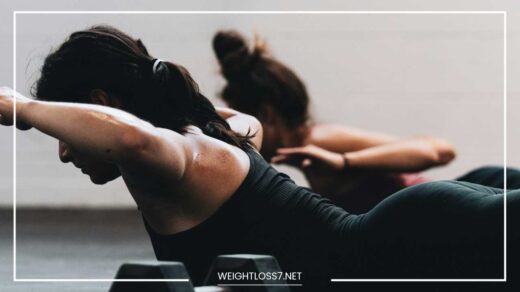Unlock Your Hips: The Ultimate Guide to Hip Exercises

Hip Exercises
Hip Exercises: The Key to Strength, Stability, and Mobility
Our hips are the foundation of movement. They connect our upper and lower body, allowing us to walk, run, squat, and climb with ease. Strong, stable, and mobile hips are essential for daily activities and athletic performance. But tight, weak hips can lead to pain, dysfunction, and limitations in movement.
This blog post dives deep into the world of hip exercises. We’ll explore the benefits of a strong hip complex, common hip issues, and a variety of exercises to address them.
Whether you’re a fitness enthusiast, a weekend warrior, or someone looking to improve your overall health, this guide will help you unlock the full potential of your hips.
Benefits of Strong Hips
Strong hips offer a multitude of benefits that go beyond just improving your squat depth. Here are some key advantages:
- Improved Posture and Alignment: Strong hips support the lower back and core, leading to better posture and preventing pain.
- Enhanced Mobility and Flexibility: Flexible hips allow for a wider range of motion, reducing the risk of injury and improving overall performance.
- Increased Strength and Power: Strong hip muscles generate power for activities like running, jumping, and kicking.
- Reduced Pain and Injury: Weakness or tightness in the hips can contribute to lower back pain, knee pain, and other movement dysfunctions. Strengthening the hips can help prevent these issues.
- Improved Balance and Stability: Strong hips contribute to better balance and stability, reducing the risk of falls.
- Enhanced Athletic Performance: Whether you’re a runner, a dancer, or a weightlifter, strong hips are crucial for optimal performance.
Common Hip Issues
Several issues can arise due to weak or tight hips. Here are some of the most common:
- Lower Back Pain: Weak or tight hip muscles can put strain on the lower back, leading to pain and discomfort.
- Hip Impingement: This occurs when surrounding tissues become pinched in the hip joint, causing pain and limited movement.
- Bursitis: Inflammation of the fluid-filled sacs around the hip joint can cause pain and tenderness.
- IT Band Syndrome: Tightness in the IT band, a connective tissue on the outside of the thigh, can lead to pain on the outside of the hip and knee.
- Sciatica: This radiating pain down the leg is often caused by a pinched nerve in the lower back, which can be related to hip dysfunction.
Exercises for Strong, Stable, and Mobile Hips
Now that we understand the importance of strong hips, let’s explore some exercises to address different needs:
Strength Exercises:
- Glute Bridges: A fundamental exercise for targeting the glutes and hamstrings. Lie on your back with knees bent and feet flat on the floor. Lift your hips off the ground until your body forms a straight line from shoulders to knees. Squeeze your glutes at the top and lower with control. You can progress this exercise by adding weight, single-leg bridges, or pausing at the top.
- Squats: Squats are a full-body exercise that works wonders for strengthening the hips, quads, and core. Stand with feet shoulder-width apart, toes slightly outward. Keep your back straight and core engaged as you lower your body as if sitting in a chair. Descend until your thighs are parallel to the floor (or lower if possible) and push back up through your heels to return to the starting position.
- Lunges: Lunges target the glutes, quads, and hamstrings while improving balance. Step forward with one leg, lowering your body until both knees are bent at 90-degree angles. Ensure your front knee tracks over your ankle and your back knee doesn’t touch the ground. Push through your front heel to return to standing and repeat with the other leg.
Mobility Exercises:
- Pigeon Pose: This yoga pose stretches the glutes, piriformis (a deep hip muscle), and hip flexors. Start in a downward-facing dog position. Bring one knee forward and place it between your hands, with your other leg extended straight back. Sit back on your heels and gently rock your hips forward and backward to feel the stretch in your front hip.
- Frog Pose: Similar to pigeon pose, frog pose opens up the inner thighs, groin, and hips. Sit on the floor with your knees bent and the soles of your feet together. Gently press your knees down towards the floor while keeping your back straight. Hold for a stretch in your inner thighs and groin.
- Hip Circles: This dynamic exercise improves hip mobility and lubrication in the joint. Stand with your feet shoulder-width apart and slowly make small circles with your hips, first forward for 10 repetitions, then backward for 10 repetitions. Gradually increase the size of the circles as your mobility improves.
Additional Tips:
- Warm-up and Cool-down: Always perform a proper warm-up before your hip workout to prepare your muscles for movement. This might include light cardio, dynamic stretches, and mobility drills. Similarly, cool down with static stretches to improve flexibility and prevent muscle soreness.
- Focus on Form: Proper form is crucial to get the most out of your exercises and avoid injury. Don’t be afraid to use lighter weights or modify the exercises if needed until you master the technique.
- Listen to Your Body: Pay attention to any pain you experience during your workout. Sharp or increasing pain is a sign to stop and consult a healthcare professional.
- Progression and Variation: As you get stronger and more mobile, gradually increase the difficulty of your exercises. This could involve adding weight, reps, sets, or trying new variations.
- Seek Professional Guidance: If you have any pre-existing injuries, limitations, or are unsure about proper technique, consider consulting a certified personal trainer or physical therapist to design a personalized hip exercise program.
Exercises for Specific Hip Issues:
- Lower Back Pain: Focus on strengthening exercises that target the glutes, hamstrings, and core, such as glute bridges, planks, and dead bugs (a core exercise performed on your back with alternating arm and leg extensions). Additionally, incorporate gentle stretches for the hip flexors and piriformis muscle.
- Hip Impingement: Mobility exercises become crucial here. Include hip circles, figure-four stretches (performed lying on your back with one ankle resting on the opposite knee), and gentle yoga poses like child’s pose and happy baby pose. Avoid activities that aggravate the impingement, such as deep lunges or high-impact exercises.
- Bursitis: Reduce inflammation with rest, ice application, and anti-inflammatory medication. Once the pain subsides, incorporate gentle mobility exercises and light strengthening exercises to improve hip function without further irritating the bursa.
- IT Band Syndrome: Stretching the IT band is key. Stand with one leg crossed in front of the other and lean towards the side of the stretched leg. You can also use a foam roller to massage the IT band for self-myofascial release. Strengthening exercises that target the glutes and hip muscles can also help improve IT band stability.
- Sciatica: Similar to lower back pain, focus on core strengthening and gentle stretches for the hamstrings, piriformis, and hip flexors. Exercises like nerve glides (gentle movements that floss the sciatic nerve) can also be beneficial under the guidance of a healthcare professional.
Advanced Hip Exercises:
Once you’ve mastered the basic exercises and are looking for a challenge, here are some advanced options:
- Single-leg Deadlift: This exercise requires balance, stability, and hip strength. Stand on one leg with a dumbbell in the opposite hand. Hinge at the hips, keeping your back straight as you lower the weight towards the floor. Maintain a slight bend in your standing knee and stop when you feel a stretch in your hamstrings. Squeeze your glutes to return to the starting position.
- Bulgarian Split Squat: Similar to lunges, but performed on a raised platform behind your non-working leg. This increases the challenge on the front leg’s hip and glute muscles.
- Side Plank with Hip Abduction: Perform a side plank with your top leg lifted off the ground. Slowly open your hips by raising your top leg higher, then lower with control. This targets the hip abductors and core stabilizers.
- Weighted Glute Bridge: Add weight to your glute bridges using a barbell or dumbbells placed across your hips. Ensure proper form before adding weight.
Hip Exercises at Home:
No gym membership? No problem! Here are some effective bodyweight exercises you can do at home:
- Step-ups: Find a sturdy step or bench and step up with one leg, bringing your other knee towards your chest. Step down and repeat with the other leg. This works your glutes, quads, and hamstrings.
- Wall Squats: Stand with your back against a wall and perform squats as if you were sitting in a chair. This helps maintain proper form and targets your quads and glutes.
- Clamshell: Lie on your side with knees bent and stacked. Lift your top knee slightly off the ground, keeping your hips stacked, and lower with control. This isolates and strengthens the gluteus medius, a key hip stabilizer.
Strong, stable, and mobile hips are essential for a healthy and active lifestyle. By incorporating the exercises mentioned above into your routine, you can unlock the full potential of your hips, improve your overall movement, and reduce your risk of injury.
Remember, consistency is key. Make hip exercises a regular part of your fitness routine, and you’ll reap the benefits for years to come. Here are some additional thoughts to wrap things up:
- Mind-Muscle Connection: When performing hip exercises, focus on engaging the target muscles. Don’t just go through the motions; feel the muscles working with each repetition.
- Breathing: Proper breathing is crucial during exercise. Inhale as you lower into an exercise and exhale as you exert force. This helps stabilize your core and improves overall performance.
- Rest and Recovery: Allow your body adequate time to rest and recover between workouts. This is when muscle growth and repair occur. Aim for at least 48 hours of rest for the same muscle group.
- Nutrition: Eating a healthy diet rich in protein, carbohydrates, and healthy fats provides your body with the building blocks it needs to build and maintain strong muscles, including your hips.
- Stretching: Regular stretching throughout the week, not just after hip workouts, helps maintain flexibility and improve range of motion in your hips.
Final Thoughts:
Taking care of your hips is an investment in your overall health and well-being. By incorporating a variety of exercises, proper form, and a healthy lifestyle, you can keep your hips strong, stable, and mobile for all your daily activities and athletic endeavors. So get moving, feel the burn, and unlock the full potential of your hips!

















